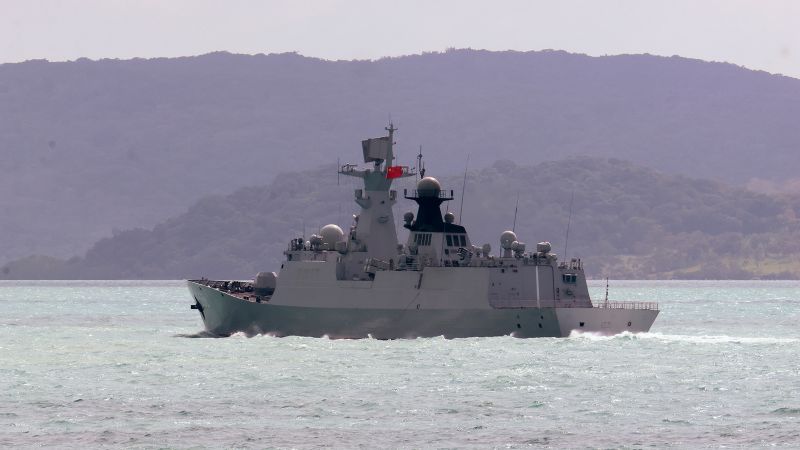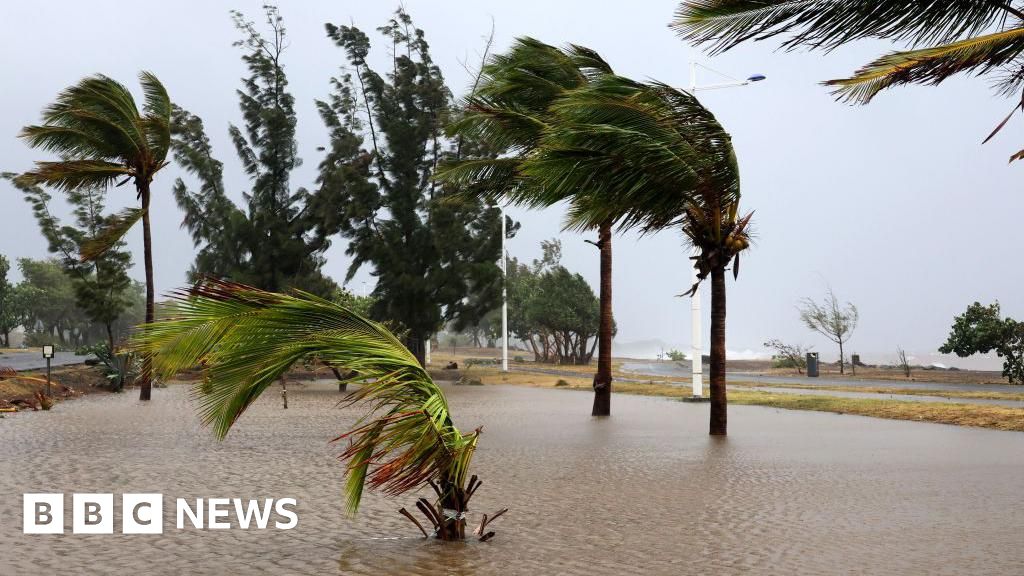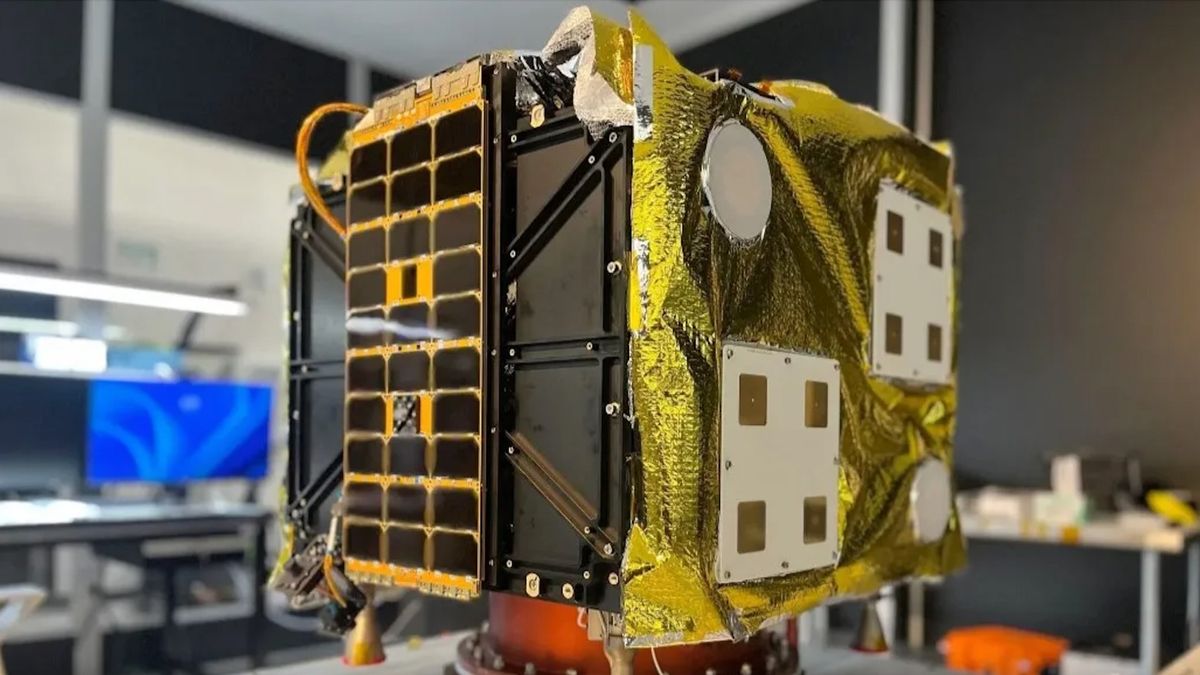
Hong Kong
CNN
—
New Zealand expressed heightened concerns on Monday regarding live-fire exercises by Chinese naval vessels equipped with advanced weaponry. This comes after a remarkable demonstration of military capabilities last week, which experts believe is part of China’s strategic initiative to develop a globally influential blue-water navy.
Over the weekend, a formation from the Chinese navy conducted two live-fire drills in the Tasman Sea, situated between Australia and New Zealand. This prompted flight diversions for passenger planes and raised alarms among officials in both nations.
New Zealand’s defense minister, Judith Collins, noted that such exercises have never been observed in those waters before.
“We have never experienced a task force of this capability conducting activities in this area. It represents a notable shift,” Collins stated during an interview with Radio New Zealand (RNZ) on Monday.
“The armaments they possess are highly sophisticated. One vessel has 112 vertical launch systems and boasts an anti-ship ballistic missile range of 540 nautical miles,” she added.
According to the Australian Defense Force, the People’s Liberation Army (PLA) Navy, which comprises a destroyer, a cruiser, and a supply ship, has been moving down Australia’s coastline since mid-February.
The Zunyi cruiser, classified as a Type 055 destroyer, is highlighted as the most proficient surface combatant in the PLA Navy, with the capability to launch ballistic and reportedly hypersonic missiles, according to Collin Koh, a research fellow at the S. Rajaratnam School of International Studies in Singapore.
“Seeing their presence this far south in the Tasman Sea—as part of a fully operational combat group—is quite extraordinary and without precedent,” he added. “In recent years, the PLA Navy has evolved from operating in near seas to far seas, steadily preparing themselves to become a genuine blue-water navy.”
Chinese state media have indicated that nations in the West should acclimate to such military activities occurring in their neighboring waters.
Song Zhongping, a Chinese military analyst, remarked to the Global Times, “The PLA Navy will progressively carry out exercises not only closer to China but also in international waters.”
As such drills are anticipated to increase in frequency, Song suggested that countries would need to adapt to this developing trend.
On Saturday, Australian Prime Minister Anthony Albanese acknowledged that while China’s exercises adhered to international law, he suggested that Beijing “could have provided more advanced notification.”
Australia’s Foreign Minister, Penny Wong, sought clarification from her Chinese counterpart Wang Yi when they met in Johannesburg during the G20 foreign ministers’ gathering earlier this weekend.
In response, China’s Defense Ministry criticized Australia for “exaggerating” the drills and making “unjustified claims.”
Wu Qian, a spokesperson for the ministry, stated that China had issued prior safety notifications and that the exercises performed in international waters were lawful and did not compromise aviation security.
However, Collins emphasized that the warning from China was insufficiently timed.
“There was a notification regarding civil aviation, but it was issued only a couple of hours in advance, which is far less than what we would consider best practice—typically a notice of 12 to 24 hours should be given so flights aren’t forced to divert mid-air,” she explained to RNZ.
Collins also mentioned that the Chinese ships were situated approximately 280 nautical miles east of Tasmania and had slightly adjusted their formations, all while being monitored by a New Zealand navy frigate.
New Zealand Deputy Prime Minister Winston Peters has plans to travel to China on Tuesday, following an invitation from Chinese Foreign Minister Wang Yi.
Under the leadership of Xi Jinping, China has developed into the world’s largest naval power, with a combat fleet comprising over 370 vessels and submarines, as per the Pentagon’s most recent annual report on the Chinese military.
The naval force has also extended its operational range, projecting strength not just in nearby waters but also across oceans thousands of miles from China’s coast.
China’s broader maritime expansion initiated in the Indian Ocean, where the PLA Navy has executed anti-piracy operations in the Gulf of Aden since 2008.
“As part of this progression, they’ll conduct necessary exercises in distant seas to better equip their crew and validate their hardware capabilities developed over the years,” Koh explained, referring to the Singapore maritime research expert.
In 2015, Chinese naval vessels were sighted for the first time in the Bering Sea, off Alaska’s coast in the United States.
While it has become increasingly common for Chinese naval ships—such as space tracking vessels or icebreakers—to traverse the South Pacific in recent years, the presence of a full combat group at this southern latitude is relatively unparalleled, Koh noted.
The recent live-fire exercises in the South Pacific signify yet another enhancement of their capabilities, Koh remarked.
“While the PLA Navy still does not match the US Navy’s global reach or comprehensive blue-water operation capabilities, it is evidently moving toward that objective,” he commented.
The presence of the flotilla indicates a growing operational confidence in the PLA Navy, both in terms of navigation and conducting live-fire drills, as well as weapons training, Koh pointed out.
“They are becoming increasingly confident in asserting military capabilities in the region, despite concerns arising from Australia and New Zealand regarding China’s intentions and its expanding influence in the area,” Koh concluded.









